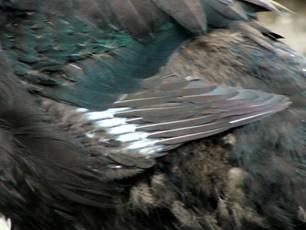- Sep 28, 2015
- 768
- 1,034
- 291
Some of my ducks are underweight and I'm experiencing casualties. I feed my flock layer feed right now from the local feed mill and they always have fresh water. With the cold weather and the fact that they STILL are not waterproof after the fires, they are suffering. I tried rehoming them on craigslist but didn't get any response so I'm really trying to do my best for them. I don't have adequate shelter for them in their current condition and have lost 3 of my 8 welsh harliquins due to cold in the night. I could see one of the remaining females was looking like she would be next so I snatched her up and brought her home where she is tucked in warm in my bathroom. When I caught her I was really devastated with how much weight she has lost. I assume it's from burning more calories to try to stay warm.
All this is to say, until I can build them a better structure, rehome them, or regain their water resistance, how can I help fatten them up so they stay warmer??
All this is to say, until I can build them a better structure, rehome them, or regain their water resistance, how can I help fatten them up so they stay warmer??







